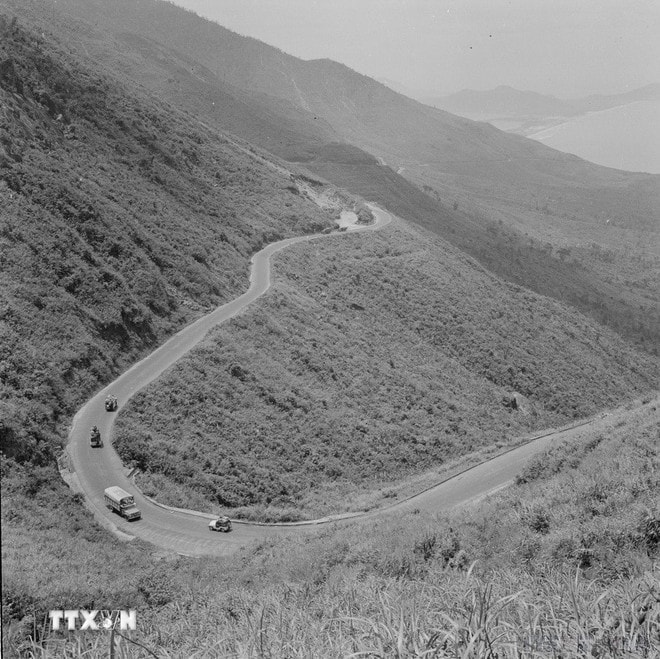The April 6, 1975 directive of the Central Office for Southern Vietnam accelerated the process of liberating provincial and district capitals in the Southern region and the extreme South Central region, including Saigon - Gia Dinh city.

In the book“Headquarters in the Spring of Victory,”General Vo Nguyen Giap wrote: “On April 6, 1975, the telegram from the Central Military Commission sent to the Command of Group 559 clearly stated: ... It is necessary to focus on ensuring support and ensuring the mobility of our forces into B2 as the number 1 central task.
Therefore, it is necessary to have a good plan to organize this work, especially to ensure the marching of units, technical weapons and ammunition needs according to the scheduled time.
I instructed Dong Si Nguyen to arrange a command post in Quy Nhon and Hoang Minh Thao in Nha Trang to organize and urge units to march along Route 1, absolutely not to affect the logistics for the advancing units...
The demands of the front are extremely urgent, day by day, hour by hour. Time is now force, is strength. Comrades, use all means to organize and urge units to march as quickly as possible, provide support as quickly as possible, and successfully complete this lightning-fast support campaign.
On the two main axes of Highway 1 and Truong Son Road, with the urgent organization of Group 559 and the active support of Military Region V, with their feet traveling thousands of miles and all possible means, the units overcame difficulties to fight the enemy and advance, and open the way to advance.
When the road collapsed, the people in the area contributed to repair it. When the bridge was destroyed by the enemy, in addition to the bridge and the self-propelled ferry of the engineers, there were also large and small boats of the people. When the car broke down, they tried every way to repair it and rescue it..."
In the East, the Coastal Army, including the majority of the Huong Giang Corps, was reinforced by the 3rd Infantry Division and the 3rd Armored Battalion of Military Region 5, following Route 1 to the South.
With the help of local Party committees and people, our troops repaired eight bridges damaged by the enemy, opened dozens of kilometers of military roads, and increased the highest daily marching speed to 185 kilometers. While marching, the units learned combat experience and how to use weapons and equipment captured from the enemy.
The Tay Nguyen Army Corps was ordered to march into the Southeast. The 316th Infantry Division and the Corps' Light Command Headquarters from Buon Ma Thuot followed Route 14 southward.
The 10th Division was sweeping the enemy in Nha Trang and Cam Ranh, quickly withdrawing troops, following inter-provincial road 2 to Highway 20. More than 3,000 vehicles of the 471st Automobile Division (Group 559) and the army corps were mobilized for transportation missions.
The 7th and 575th Engineer Regiments received help from thousands of ethnic people in the Bac Ai base and the newly liberated areas to repair roads and build bridges.
On April 6, 1975, the 8th main force Division of Military Region 8, the 241st Engineer Battalion of Military Region and local armed forces cut off some sections of Highway 4; the 4th main force Division of Military Region 9 and local armed forces destroyed Ba Cang sub-region and controlled Tra Noc airport (Can Tho).
On the same day, April 6, 1975, the Commander of the 126th Naval Special Forces Regiment, Mai Nang, was called by Lieutenant Colonel Hoang Huu Thai, Deputy Commander of the Navy, to assign the task: “The time to liberate the South is ripe. The Central Military Commission and Commander-in-Chief, General Vo Nguyen Giap assigned the task to the Navy to coordinate with Military Region 5 to organize forces to urgently mobilize and fight, capture the islands occupied by the puppet army, and liberate the Truong Sa archipelago.
This is a secret and very important mission. The Navy Command and Military Region 5 agreed to establish a unit to carry out this mission, with the code name Group C75, and assigned you as the Group Leader, including officers and soldiers selected from the 126th Special Forces Regiment, ships and sailors of Brigade 125 (Unnumbered Ships) and the special forces of Military Region 5, with reinforced army weapons and equipment such as DKZ, 82mm mortars, B41...”
Also on April 6, 1975, the Central Committee of the Southern Region issued a directive to step up the general offensive and general uprising to liberate the cities. The directive stated: “The direct revolutionary situation in the cities has arrived, the urgent tasks ahead have merged with the basic tasks of the national democratic revolution in the South.”
Implementing the Central Bureau's directive, the Saigon - Gia Dinh City Party Committee issued documents“Things to do immediately before, during and after the city is liberated”.
The April 6, 1975 directive of the Central Office for Southern Vietnam accelerated the process of liberating provincial and district capitals in the Southern region and the extreme South Central region, including Saigon - Gia Dinh city.
TH (according to VNA)